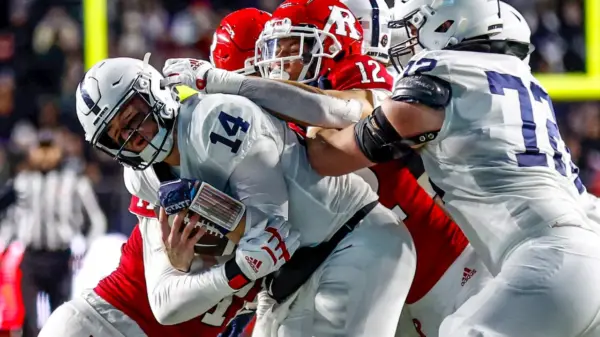The recent firing of football head coach Brian Kelly has plunged Louisiana State University (LSU) into turmoil, with a staggering $53 million buyout leaving many questioning the financial management of college athletics. The situation escalated when Louisiana Governor Jeff Landry publicly criticized the university’s athletic administration, particularly targeting Athletic Director Scott Woodward for the lack of success under Kelly and the financial burden now placed on taxpayers.
During a press conference originally intended to address food stamp issues, Landry shifted focus to the athletics department, stating, “I care about what the taxpayers are on the hook for,” and expressing his frustration over rising ticket prices amid a disappointing football season. His comments reflect a growing sentiment among university administrators across the nation regarding the unsustainable economics of college football.
Firing Frenzy and Financial Fallout
LSU is not alone in facing these challenges. Since September 23, 2023, when Oklahoma State dismissed Mike Gundy, a total of ten Football Bowl Subdivision (FBS) schools have parted ways with their head coaches, resulting in a collective payout of approximately $169 million. This trend coincides with a significant shift in college athletics, particularly after a $2.8 billion settlement was approved by U.S. District Judge Claudia Wilken, mandating that colleges share revenue with their student-athletes. This year alone, estimated payouts from this settlement are expected to reach $20.5 million, with increases anticipated annually.
The escalating costs of college football have left many administrators disheartened, viewing the financial commitments made to coaches as reckless. “There’s not even a plane. It’s a hot air balloon,” remarked a board member from an affected institution, highlighting the precarious state of financial planning in college sports.
The High Cost of Coaching Contracts
As college football programs strive to remain competitive, the spending has surged to unprecedented levels. Facilities have become extravagant, equipped with amenities such as mini-golf courses and marble showers. Additionally, coaching salaries have skyrocketed, with nine head coaches earning over $10 million annually at the start of the season, and twelve having buyouts exceeding $40 million. Notably, Kirby Smart of Georgia has a staggering $105 million buyout clause.
The financial strain is evident at institutions like Penn State, which owes $49 million to Kelly’s counterpart, James Franklin. In the past decade, Penn State’s football expenditures have surged by 113%, while overall departmental revenues have increased only 83%. LSU’s figures reflect a similar trend, with football spending rising 44% compared to a 40% increase in revenues.
Despite the financial burden, the race for top-tier coaches continues unabated. Recently, Curt Cignetti secured an eight-year, $93 million contract with Indiana, further contributing to the inflation of coaching salaries.
As LSU grapples with its leadership vacuum, Woodward’s anticipated exit adds another layer of uncertainty. With both a football coach and athletic director in flux, the university’s future direction remains unclear. According to reports, Woodward’s buyout is estimated to be around $6.4 million, adding yet another financial obligation to the mix.
Governor Landry’s remarks have sparked discussions beyond Louisiana, resonating with many who view the current state of college football as unsustainable. As the financial landscape continues to evolve, the pressing question remains: just where will the funding for these costly commitments come from?





































































